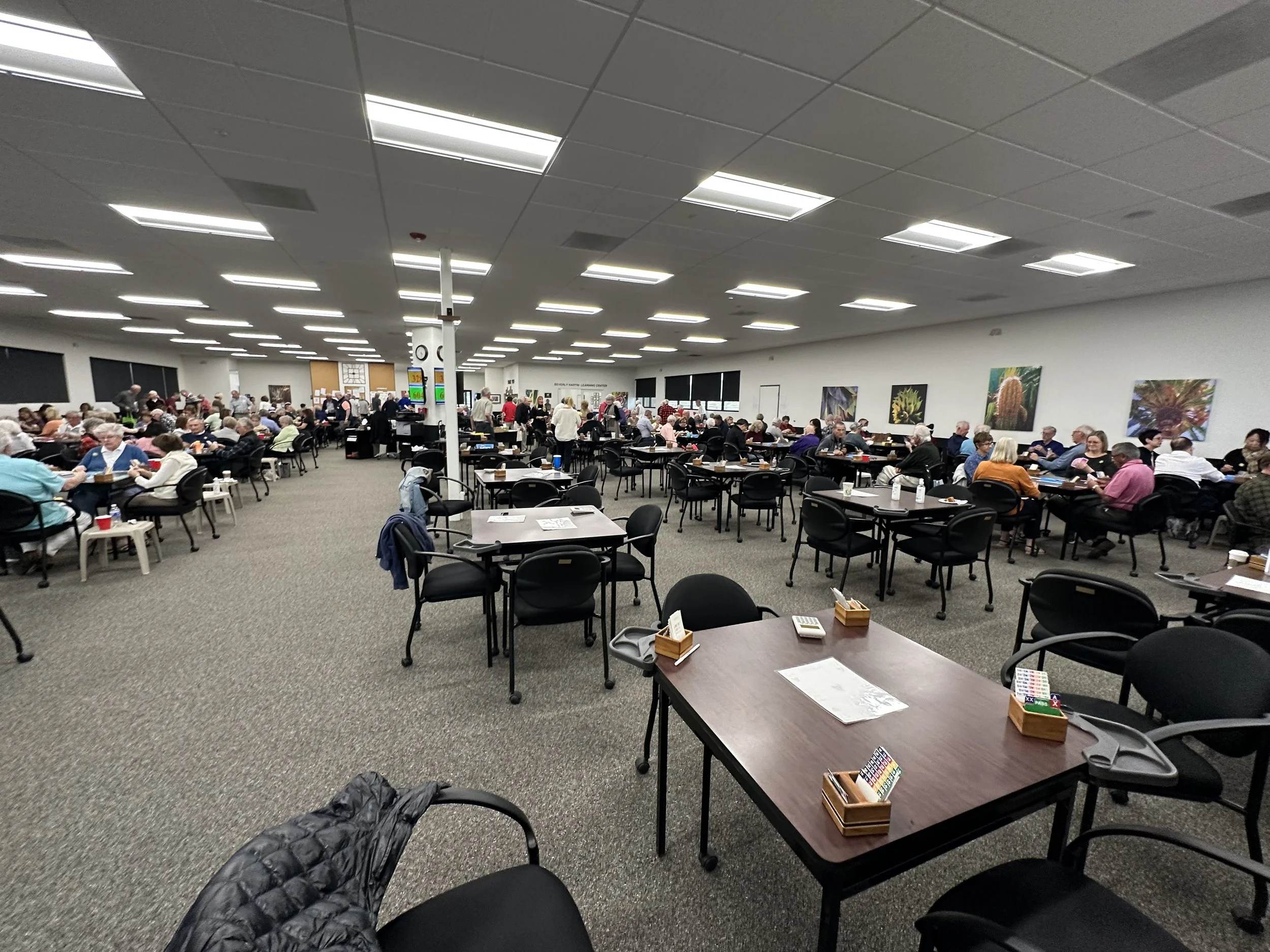This Week in Bridge
(465) Help Suit Game Tries (HSGT)
© AiB Robert S. Todd
Level: 5 of 10 (2 of 6) robert@advinbridge.com
General
After we find a fit with partner at a low level, what is the next thing we proceed to do?
If we are not interested in game, we pass (sign off).
If we have enough to play game, we bid it.
If we have values in between pass and game (possibly interested in game), we need to try to find out more information about partner’s hand.
Help Suit Game Tries are used to find out whether we should bid game or stop in a partscore.
Getting Information from Partner
What do we want to find out from partner about the hand?
How many points does partner have – maximum or minimum?
Where are those points are located, in which suits?
Does partner like their hand?
How do we find out this information about partner’s hand?
We could just raise 1M-2M-3M as a quantitative bid, asking if partner has maximum or minimum values, but this does not give partner any additional information to allow them to reevaluate their hand. We want to give partner more information to help partner help us make a decision about whether to go to game or to stop in a partscore. We do this by using Help Suit Game Tries (HSGT).
Help Suit Game Tries (HSGT)
When we make a HSGT by bidding a new suit after we have found a fit, we are asking partner if they can help with our potential losers in that suit. This is our side suit. We are taking the focus away from the total value of their hand and asking partner to re-evaluate based on fitting cards for our side suit. The classic holding for us to make a game try into is Axxx. Unfortunately, we can’t always have this holding. But we want partner to visualize us having this holding or something close to it and tell us if their holding will be helpful to us. “Help” means that partner can cover our losers in this suit – this can be either with honors or ruffing values.
Some Examples of Help Suit Game Tries
Example 1
1♠ P 2♠ P
3♣/3♦/3♥
Example 2
1♥ P 2♥ P
2♠/3♣/3♦
Example 3
1♣ P 1♥ P
2♥ P 2♠/3♣/3♦
What does partner do after we make a HSGT?
With good help in this suit, partner bids game.
With no help, partner signs off, returning to our known fit below game.
If partner is in between and has some help, partner can bid something else (if there is space) to try to give us some additional information about the hand – this is called a “Try Back.”
With help and an appropriate hand, partner could also offer an alternative game – like 3NT.
Do We Have Help?
Let’s examine many of the holdings that we might have when partner makes a HSGT and determine if it is enough help (Yes), not enough help (No), or some help (Some).
· x Yes
· xx Some
· xxx No
· xxxx+ No
· A Yes
· Ax Yes
· Axx Yes -- but not as much help as Ax or Axxx.
· Axxx+ Yes
· K Yes
· Kx Yes
· Kxx Yes – but not as much help as Kx or Kxxx.
· Kxxx+ Yes
· Q Yes
· Qx Yes
· Qxx Some
· Qxxx+ Some
· J Yes
· Jx Some
· Jxx No
· Jxxx+ No – though better than Jxx.
· QJ Yes
· KJ Yes
· AJ Yes
· KQ Yes
· AQ Yes
· AK Yes
· QJx Yes
· KJx Yes
· AJx Yes
· KQx Yes
· AQx Yes
· AKx Yes
If it is a close decision (some help) and we do not have enough room to make a try back, then we should consider the following other aspects of our hand to make a final decision:
Trump Quality – with good trump, be aggressive and accept the game try.
Spot Cards - with Ts and 9s in partner’s suit(s), accept the game try.
Overall Values – If we are a maximum with some help then we should accept the game try, and if we are a minimum with some help then we should reject it.
HSGT for Slam
In certain situations where we have a monster hand we can use this information-gathering tool to help us make a decision about slam instead of just game. Let’s look at how this works through an example.
Example 4
1♥ 1♠ 2♠ P
3♣ P ?
Imagine we hold:
♠ 8
♥ KQJ74
♦ AK93
♣ A42
If partner does not accept the HSGT for a game (they have a bad ♣ holding) then we know slam is not good – we will likely have ♣ losers. If their honor cards could be something like this:
♠ Kxx
♥ Axxx
♦ QJx
♣ Jxx
then partner will not like their hand, will try to sign off in 3♥, and we will be warned to stay out of slam.
If partner bids 4♥ instead (accepts our HSGT) then we know they like their ♣ holding and a slam may have very good play. We then bid on to explore for slam.
♠ --
♥ Axxx
♦ Qxxxx
♣ KQxx
In this case, partner will like their hand and bid 4♥. We will then move forward towards slam.
Conclusion
Help Suit Game Tries are useful in finding out more detailed and specific information about partner’s hand. Many times it is not how many points partner has, but that partner has the right points that allows us to make a game. This tool helps us better determine the usefulness of partner’s cards and make cooperative decisions about bidding game.

